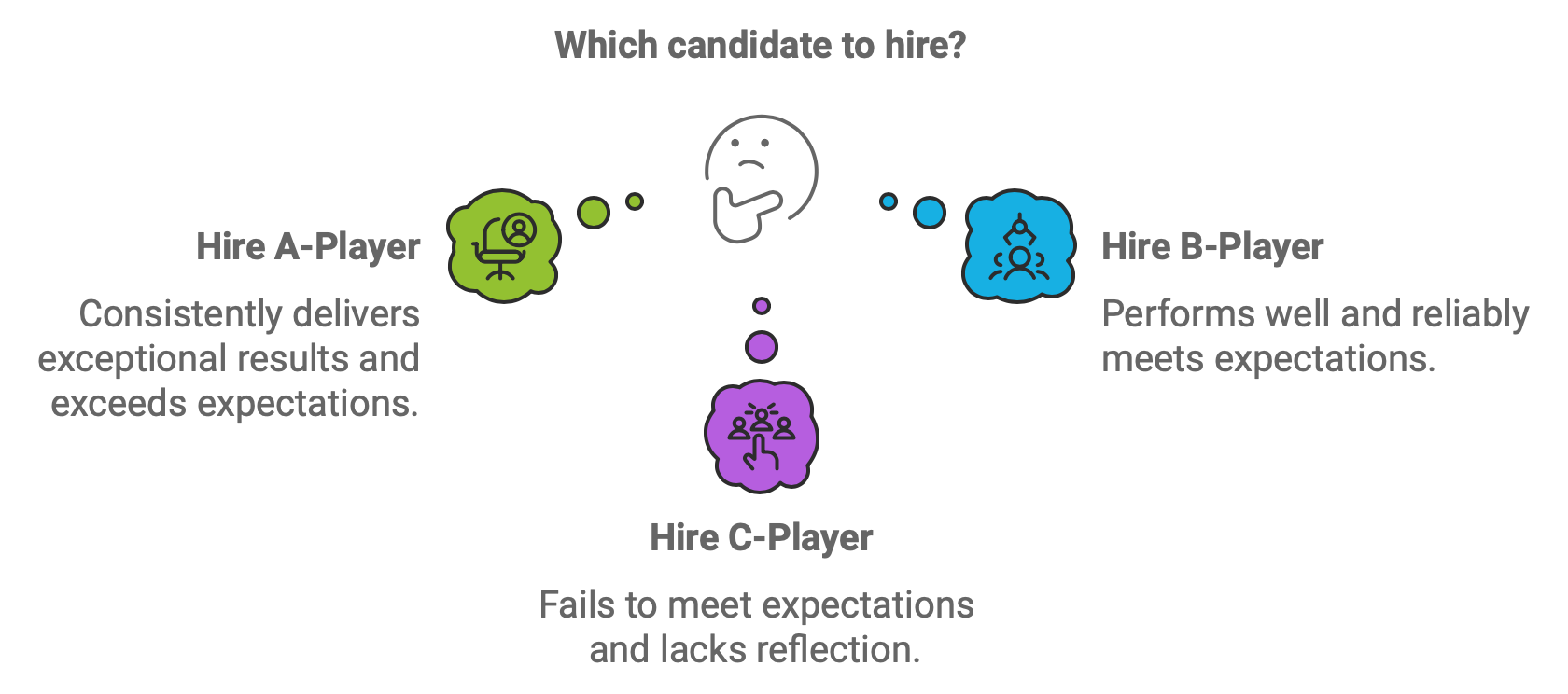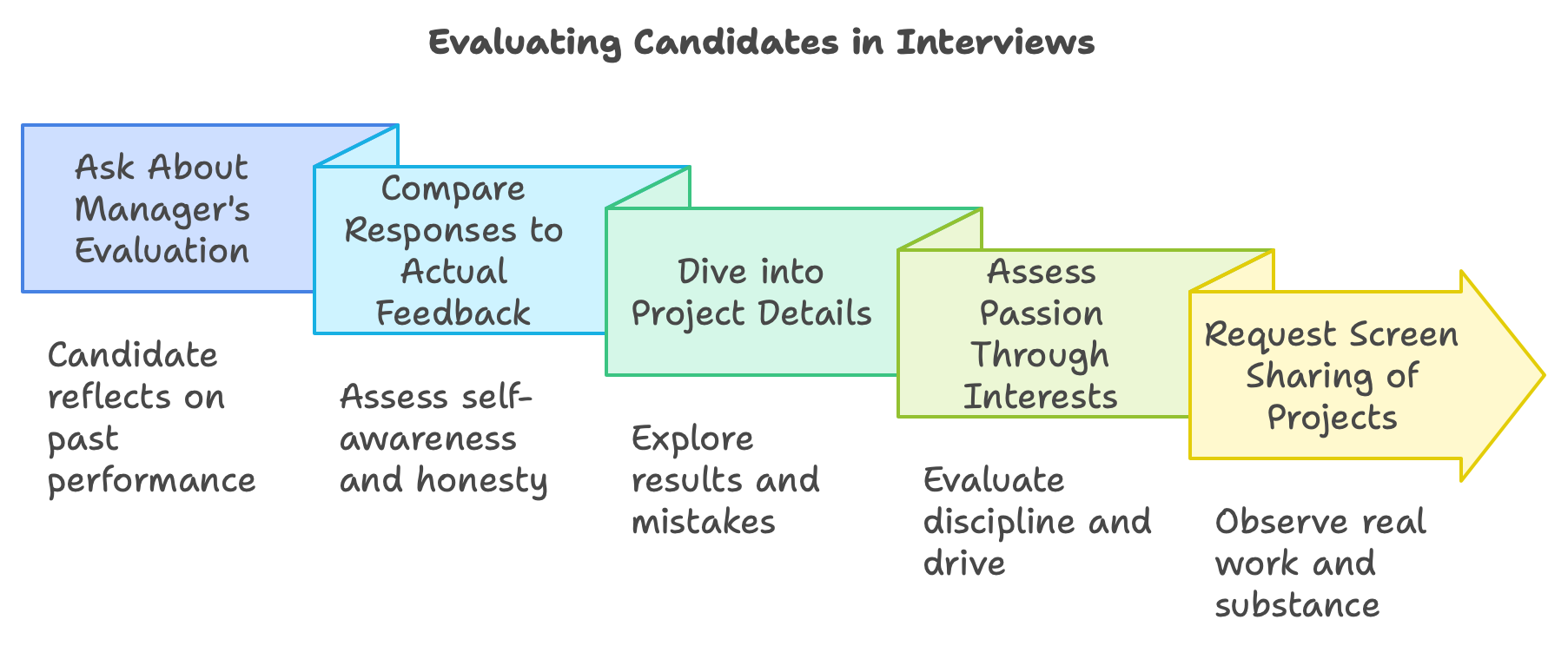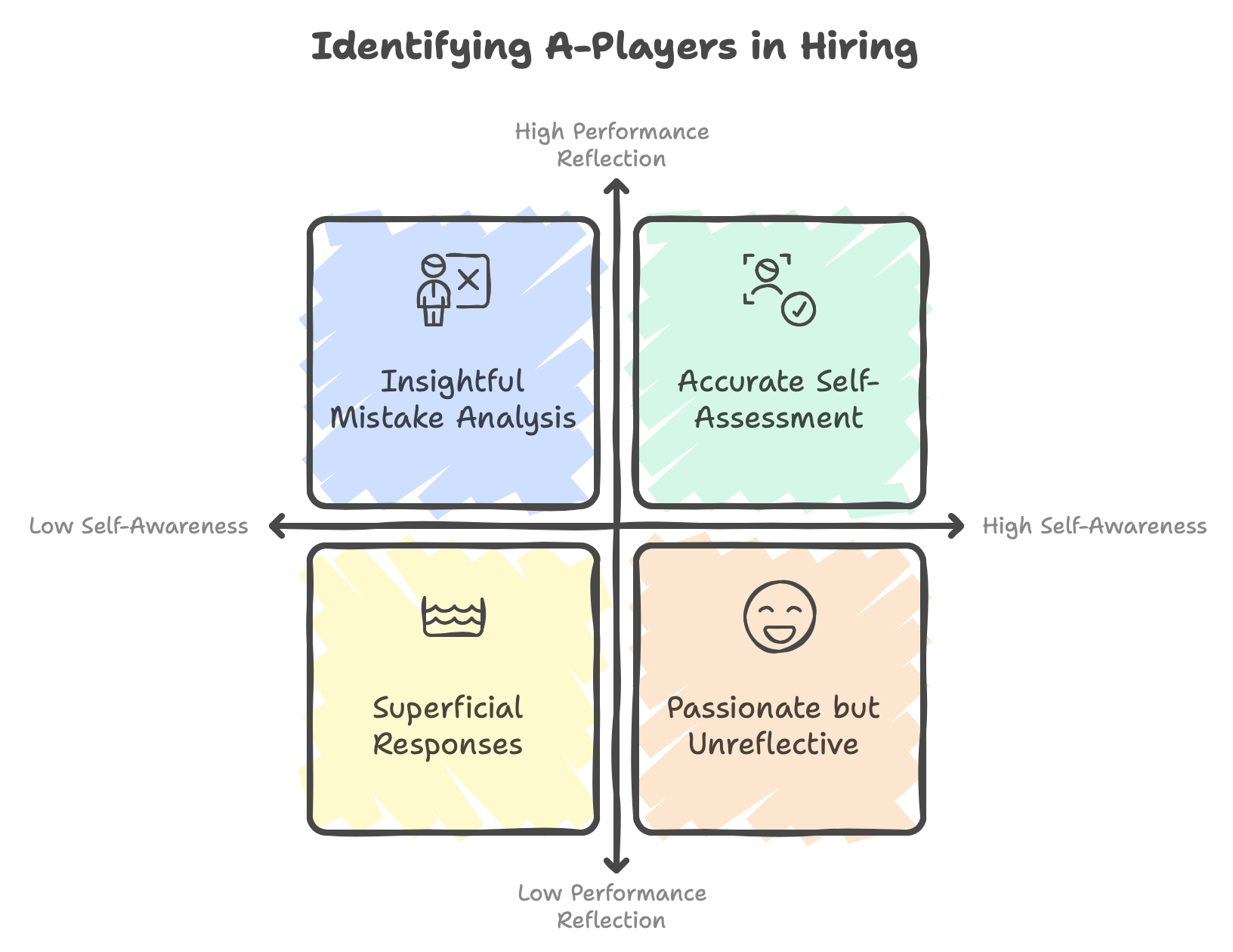Understanding A, B, and C Players
About two years ago at UK Tech Unicorn, my people management team and I began working with the concept of ABC players. Understanding the differences between A, B, and C players is critical when forming an effective talent acquisition strategy and identifying who’s who within the company.
This insight helps you decide whether you should focus on improving current employees’ performance or attracting more A-Players while minimising the presence of C-Players.
You also can listen our podcast on YouTube about this article.
You also can listen our podcast on YouTube about this article.
Who Are ABC Players?
A critical note: ABC categorization doesn’t correlate with job titles or skill levels (junior, mid-level, senior) nor is it strictly tied to hard and soft skills. An A-Player could be a newcomer or a seasoned expert—it’s all about consistent performance and mindset.
So, who are A-Players? These are individuals who consistently deliver exceptional results and exceed expectations. The defining trait of an A-Player is this consistency; one successful project doesn’t make someone an A-Player. It’s about ongoing high performance and motivation.
B-Players perform well and reliably meet expectations. They’re dependable, but not extraordinary.
C-Players, on the other hand, fail to meet expectations and often lack reflection on their shortcomings. They’re not contributing to the company’s growth and may even be a drag on the team’s performance.

A-Player vs. Junior, Mid-Level, Senior
The ABC classification looks at a different dimension than the typical junior/mid/senior hierarchy. For example, a highly driven junior who consistently exceeds their goals in their role can be considered an A-Player.
Think of a footballer who just joined a team. They might not shine on the field yet, but their dedication in training and hunger for improvement stand out. That drive signals an A-Player, even if they haven’t yet reached a technical proficiency on par with more experienced players.
Similarly, in business, a junior employee may not have the experience of a senior but could still be an A-Player if they consistently exceed expectations and show an unstoppable drive. This approach helps evaluate the true impact of each team member.
Key Traits of A-Players and How to Identify Them
There are several signs to look for when identifying an A-Player. These traits aren’t guaranteed indicators, but they provide a foundation for evaluation:
- Strong Recommendations: If a candidate comes highly recommended by past employers who say they would rehire them in a heartbeat, that’s a strong indicator you’re dealing with an A-Player. If previous employers aren’t too enthusiastic, you may be looking at a C-Player.
- Passion Beyond Work: A-Players often show deep dedication outside the workplace, too. Whether it’s achieving a black belt in karate or regularly hiking mountains, their pursuit of excellence in different areas of life reflects their commitment to achieving results.
- Self-Reflection and Growth: A-Players tend to reflect on their failures and learn from them. Their ability to analyze mistakes and continuously improve is crucial in maintaining high performance.
How to Grow Into an A-Player
To become an A-Player, the first thing you need is to engage in work that excites you. If your job doesn’t interest you, you’ll struggle to excel. This is similar to how a teacher can inspire or deter a student’s passion for a subject, such as chemistry.
Another key factor in growing into an A-Player is to find a meaningful hobby. Hobbies aren’t just for downtime—they’re also a way to recharge and prevent burnout. When you have a passion outside of work that renews your energy, you’re less likely to burn out and more likely to bring that energy back into your job.
Why Not Everyone Needs to Be an A-Player
It’s important to remember that not everyone needs to be an A-Player, and that’s okay. Not every company or role requires A-level talent, and pushing everyone to be an A-Player can lead to unrealistic expectations and burnout. Sometimes, it’s more about finding the right fit for the right role.
How to Spot A-Players During Hiring
Many of the traits we use to assess internal team members apply during the hiring process as well. One powerful question during interviews is: “When I talk to your former manager, how do you think they’ll evaluate your performance?” The candidate’s answer, compared to the manager’s actual feedback, can reveal a lot about their self-awareness and true performance.

Dive into specifics—ask about results, how they were achieved, and what mistakes were made. It’s not the errors themselves that matter but how deeply the candidate reflects on them and the lessons they’ve drawn from those experiences.
You also want to explore their interests. The depth of their passion—whether it’s for sports, literature, or any other field—can signal discipline and a drive for self-actualization. For instance, someone running weekly might not show much, but someone who trains for marathons likely has the dedication you’re looking for.
I also love to ask candidates to share their screens and walk me through a project they’ve worked on. It’s a great way to get a real sense of their work. Words can be crafted to sound impressive, but seeing the project in action shows whether there’s true substance behind it.

What Attracts A-Players to a Company
Not every company is set up to attract A-Players, and that’s okay. But if you’re looking for highly motivated and talented individuals, it’s crucial to offer them meaningful challenges. Compensation reaches a point where it just needs to satisfy basic needs. After that, the key motivators become purpose and impact.
Finding meaning in your work can feel like adding years to your life. When you’re engaged in something that aligns with your personal mission, life becomes richer and more fulfilling. This sense of purpose is a major factor in attracting and retaining A-Players.
A company’s mission can’t just be a slogan framed on the wall; it has to resonate with the team. When your mission has depth and real-world significance, it draws in the right people who share that passion.

My Thoughts
Building a team of A-Players is a powerful strategy for driving a company’s success. Talent acquisition should focus not just on filling roles but on finding individuals whose ambition and dedication align with your company’s vision. Fractional HR services like those offered by UnitiQ can be a game-changer in this regard, especially for smaller businesses that need top-tier people management without the cost of a full-time HR team. By strategically using fractional HR, companies can enhance their hiring process and ensure they are attracting and retaining A-Players who can lead them to long-term growth.
In conclusion, focusing on hiring and nurturing A-Players is a long-term investment that leads to significant returns, both in team performance and company culture. However, it’s essential to strike a balance and recognize that B-Players also have valuable roles, ensuring the team functions cohesively.
I also recommend you to read related articles:
How Growing and Scaling Businesses Can Attract Top Talent: Proven HR Strategies for Success
HR Branding: The Key to Attracting Talent and Building Long-Term Loyalty
5 Hiring Hacks Every Founder Needs to Attract Top Talent Fast
UnitiQ’s Method for Sourcing and Developing Top Engineering Talent
We help to building teams with right skills and based on your value
I also recommend you to read related articles:
How Growing and Scaling Businesses Can Attract Top Talent: Proven HR Strategies for Success
HR Branding: The Key to Attracting Talent and Building Long-Term Loyalty
5 Hiring Hacks Every Founder Needs to Attract Top Talent Fast
UnitiQ’s Method for Sourcing and Developing Top Engineering Talent
We help to building teams with right skills and based on your value
Listen on Youtube
Author
Olga Fedoseeva is an award-winning HR executive and people strategist with over 20 years of international experience across EMEA, the US, and APAC. Currently Chief of Staff at Exponential Science and Founder of UnitiQ, she has personally hired more than 1,000 employees and scaled organizations from 30 to 3,000 staff. Recognized as one of the Top HR Women in EV (2021), Olga has led global HR transformation, talent acquisition, and people operations for startups, scale-ups, and multinational enterprises. Her expertise spans the full HR lifecycle—succession planning, DEI, HR tech integration, workforce planning, and executive coaching—helping businesses align people strategies with growth objectives while fostering inclusive, high-performance cultures.








